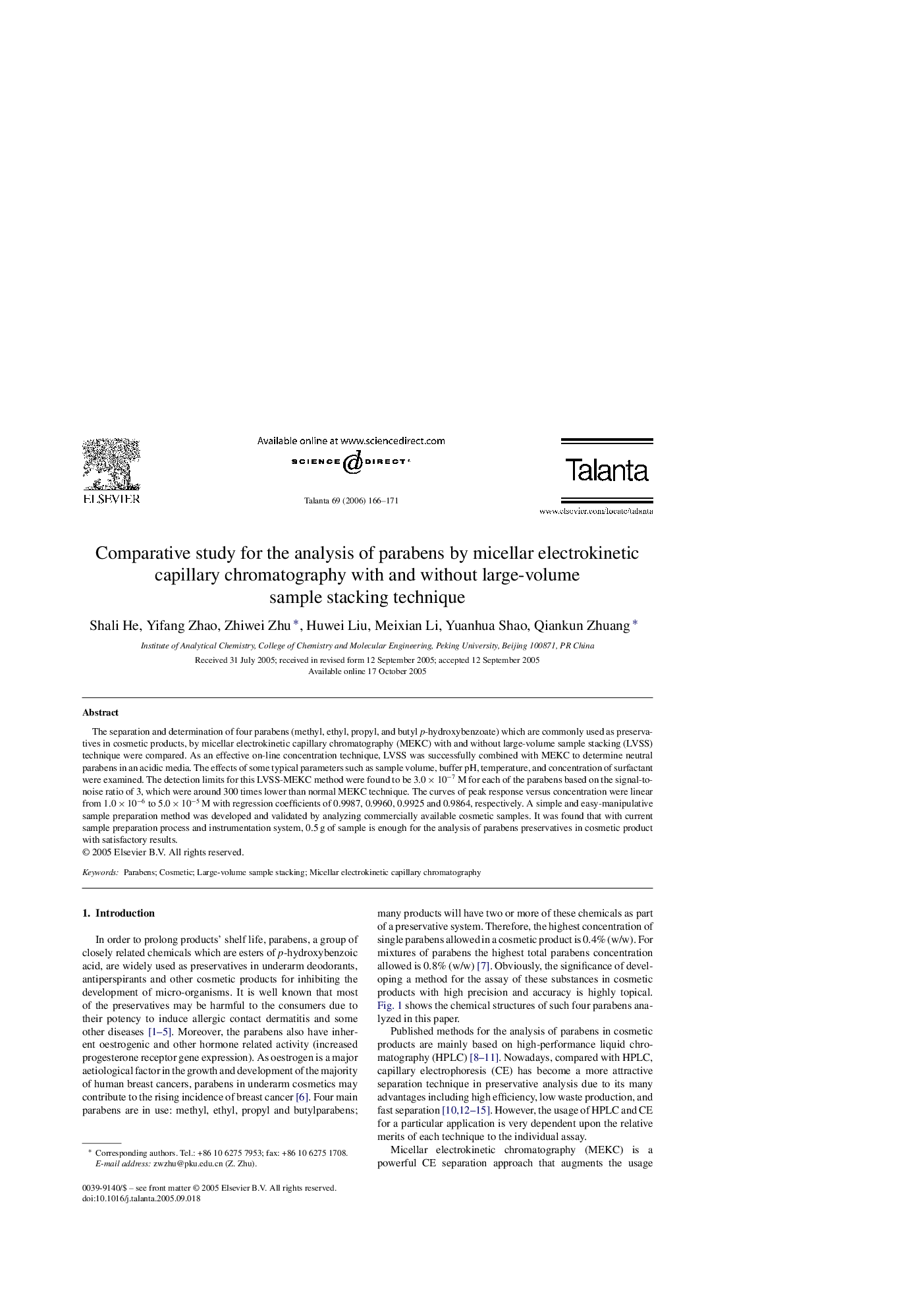| Article ID | Journal | Published Year | Pages | File Type |
|---|---|---|---|---|
| 1245785 | Talanta | 2006 | 6 Pages |
The separation and determination of four parabens (methyl, ethyl, propyl, and butyl p-hydroxybenzoate) which are commonly used as preservatives in cosmetic products, by micellar electrokinetic capillary chromatography (MEKC) with and without large-volume sample stacking (LVSS) technique were compared. As an effective on-line concentration technique, LVSS was successfully combined with MEKC to determine neutral parabens in an acidic media. The effects of some typical parameters such as sample volume, buffer pH, temperature, and concentration of surfactant were examined. The detection limits for this LVSS-MEKC method were found to be 3.0 × 10−7 M for each of the parabens based on the signal-to-noise ratio of 3, which were around 300 times lower than normal MEKC technique. The curves of peak response versus concentration were linear from 1.0 × 10−6 to 5.0 × 10−5 M with regression coefficients of 0.9987, 0.9960, 0.9925 and 0.9864, respectively. A simple and easy-manipulative sample preparation method was developed and validated by analyzing commercially available cosmetic samples. It was found that with current sample preparation process and instrumentation system, 0.5 g of sample is enough for the analysis of parabens preservatives in cosmetic product with satisfactory results.
